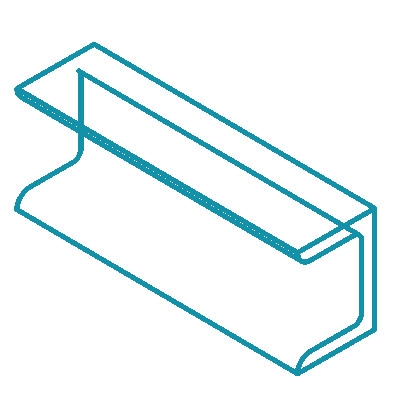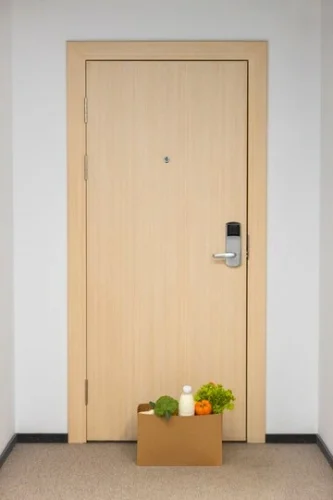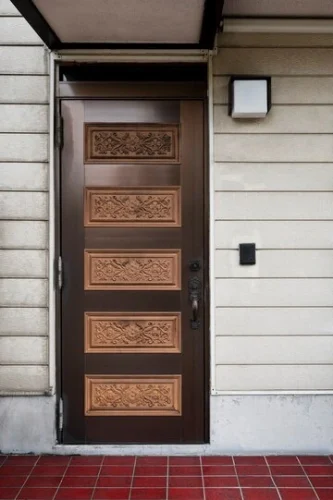
10 Stylish and Space-Saving Sliding Door Designs for Modern Homes
January 23, 2025
Trendy Window Glass Design Photos to Inspire Your Home Makeover in 2025
January 24, 2025Designing and style are the most important things we look for when selecting doors. Some people choose simple and sleek designs, while others prefer decorative designs on their doors.
In this article, we will discuss normal doors, also known as flush doors, and how they are different from panel doors.
Flush door meaning
A flush door is a simple, sleek, and plainly designed door. These doors can be made from solid wood or MDF particle board and are frequently finished with laminates or veneers. The flush door image is added below for your reference.
Source: Freepik
Types of materials used in flush doors
Flush doors can be created in different ways, like wooden flush doors, flush door designs with mica, and many more. Below are some types of materials used in flush doors:
Plywood
Plywood is one of the most commonly used materials in flush doors. It is perfect for forming the core or outer layer of flush doors, as it offers a smooth surface in the door.
You may also like: What is engineering wood, its types, benefits and disadvantages
Medium-Density Fiberboard (MDF)
MDF flush doors are known for their affordability and smooth finishing. By combining it with flush door mica designs, it improves the elegance and visual appeal of the home.
Solid Wood
Solid wood is commonly used for stiles and rails to provide structural integrity to flush doors. While maintaining stability, it adds strength by holding accessories such as durable flush door handles.
Blockboard
Blockboard is another common yet lightweight material for creating flush doors. This type of door adds more strength by applying veneers and laminate to it.
Particle Board
Particle board is known as a budget-friendly option to create flush doors. While it is less durable than plywood or blockboard, it performs well in areas with minimal exposure to wear and tear.
Difference between flush door and panel door
One of the primary and foremost differences between flush and panel doors is in their design. Flush door is known for its simplicity, sleek, and classic appearance; on the other hand, the panel door provides a textured and modern look to its homeowners. The image of the panel door is added below for your reference.
Source: Freepik
Aspect | Flush Door | Panel Door |
Design | Flush doors have a plain, smooth surface with no visible joints or panels. | Panel doors have multiple panels that can be raised or recessed for design. |
Construction | This door is made using a solid core with veneers or laminates on top. | It is constructed with stiles, rails, and panels made of wood, glass, or plywood. |
Appearance | Flush doors offer a sleek, modern, and minimalist look. | Panel door provides a textured decorative appearance. |
Durability | These doors are resistant to moisture and pests and are also easy to maintain. | Panel doors can be durable but may require more maintenance, especially if made of wood. |
Cost | Flush doors are generally more affordable due to simpler construction. | Panel doors are often costlier because of intricate designs and material options. |
Conclusion
Choosing a panel door is a great option if you want a simple and sober look in your home. But if your priority is textured and decorative, then panel doors can be the best option. Both the doors come with a variety of materials and design options.
Frequently Asked Questions on Flush Doors
1. What is a wooden flush door?
A wooden flush door has a solid wooden core with a plain surface. It is covered with veneers or laminates for a smooth finish and combines durability with an elegant look for homes and offices.
2. What is a flush door?
A flush door has a flat, smooth surface without panels or carvings. It is made with a solid core and finished with laminates or veneers, offering a modern design and low-maintenance durability for various spaces.
3. Where is a flush door used?
Flush doors are widely used in homes, offices, and commercial spaces. They are ideal for interior and exterior doors, offering durability, soundproofing, and a sleek appearance, making them suitable for both modern and minimalist designs.
4. What are the disadvantages of a flush door?
Flush doors lack intricate designs and may not suit traditional aesthetics. They are less impact-resistant than solid wood doors, and low-quality flush doors may warp or delaminate in high-moisture environments if not properly sealed.









